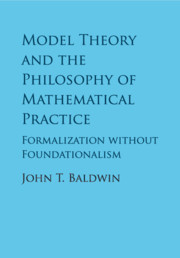PART III - GEOMETRY
Published online by Cambridge University Press: 19 January 2018
Summary
Themoremodern interpretation:- Geometry treats of entities which are denoted by the words straight line, point, etc. These entities do not take for granted any knowledge or intuition whatever, but they presuppose only the validity of the axioms, such as the one stated above, which are to be taken in a purely formal sense, i.e. as void of all content of intuition or experience. These axioms are free creations of the human mind. All other propositions of geometry are logical inferences from the axioms (which are to be taken in the nominalistic sense only). The matter of which geometry treats is first defined by the axioms. Schlick in his book on epistemology has therefore characterized axioms very aptly as ‘implicit definitions.’ [Einstein 2002]
We have identified Einstein's ‘modern interpretation’ with Hilbert. But we take Einstein's ‘free creations’ in a limited sense. The axioms represent and sharpen prior intuitions. In this part we examine the historical relationship between certain intuitions, often formed by earlier axiomatizations, and new sets of axioms.We aim to evaluate axiomatizations of the geometric continuum.
In Chapter 9.1, we consider several accounts of the purpose of axiomatization and adjust Detlefsen's notion of descriptive completeness by fixing a criterion for evaluating axiom systems: modest descriptively complete axiomatization.
We lay out in Chapter 9.3 various sets of axioms, crucially formulated in different logics, for geometry and correlate them with the specific sets of propositions from Euclid that they justify.We emphasize those propositions of Euclidean, Cartesian, and Hilbertian geometry which might be thought to require the Archimedean or Dedekind axiom but do not; Hilbert's proof that the first order axioms suffice to define a field yields these geometric propositions. In particular, the notions of similarity and area of polygons are so grounded. This leads to the conclusion argued in Chapter 11 that Hilbert's full axiomatization is immodest. Such a formula as A = πr2 is not justified on the basis of Hilbert's first order axioms (even with Archimedes); but in Chapter 10, we expand the first order theory of Euclidean geometry EG, by adding a constant π which allows us to compute the area and circumference of a circle. Invoking o-minimality we do the same for the Descartes/Tarski geometry.
- Type
- Chapter
- Information
- Model Theory and the Philosophy of Mathematical PracticeFormalization without Foundationalism, pp. 201 - 202Publisher: Cambridge University PressPrint publication year: 2018



